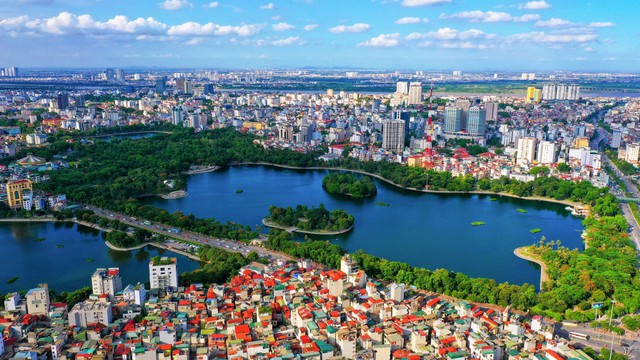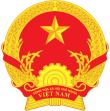Program No. 05-CTr/TU-“compass” guiding Ha Noi’s urban spatial development
VGP - Program No. 05-CTr/TU of the Ha Noi Party Committee for the 2021–2025 period is considered a “compass” guiding urban spatial development toward sustainability, harmonizing economic growth with environmental protection and the preservation of the capital’s cultural and historical values.

Since its issuance in 2021, the program has clearly identified its focus on strengthening planning and planning management, viewing it as the foundation for Ha Noi's comprehensive, modern, and sustainable development.
Under the program, the development of underground spaces is considered one of the key breakthroughs.
Chairman of the Ha Noi People's Committee Tran Sy Thanh affirmed that the program is not merely an administrative task but a concrete action plan to gradually realize the goal of sustainable development for the capital.
The capital city is also implementing a two-tier local government model, marking a significant shift in organizational structure and administrative decentralization.
Ha Noi aims to establish a multifunctional underground system that includes traffic tunnels, technical tunnels, commercial centers, parking facilities, service infrastructure, and underground connections, with a view to expanding the usable land fund, easing pressure on surface infrastructure, and enhancing the city's resilience to climate change.
Underground constructions can not only help reduce traffic congestion but also support water storage for flood prevention, serve urban living needs, and integrate multiple other functions such as commercial centers, transportation, logistics, and waste treatment.
Meanwhile, Ha Noi is accelerating the digitalization of all planning data, moving toward urban management based on a Geographic Information System (GIS) platform. The public disclosure of online planning maps and transparent information enables citizens to easily access data, monitor developments, and report violations.
This transparency and digitalization mark a clear shift from administrative management to smart management, contributing to more effective monitoring, greater openness, and enhanced public trust in urban planning and development.
Ha Noi's future orientation in 2030–2050 period: towards green, modern, and livable city
The implementation of the program still faces numerous challenges, including the pressure of rapid urbanization, while technical, social, and transportation infrastructure have yet to keep pace with the city's development speed.
Besides, another challenge lies in the limited investment resources for digitalization and smart city development, especially in maintaining and updating data as well as training highly skilled technical personnel.
Furthermore, climate change, environmental pollution, and the shrinking area of urban green spaces remain pressing issues that must be addressed in parallel with the city's growth.
During the 2030-2050 period, the capital city will focus on three key pillars.
Firstly, Ha Noi will expand green areas, lakes, parks, and ecological corridors; preserve natural rivers and lakes; and promote green transportation and energy-efficient buildings.
Secondly, modernizing infrastructure by developing an integrated underground system, public transport, ring roads, metro networks, and electric charging stations; while accelerating digital transformation and smart governance.
Third, preserving identity and enhancing quality of life by safeguarding historical and cultural values; creating creative spaces, pedestrian zones, and open heritage areas; and encouraging citizen participation in urban management.
The capital city will strengthen public–private partnerships (PPP) to attract social resources for green infrastructure and development projects./.

